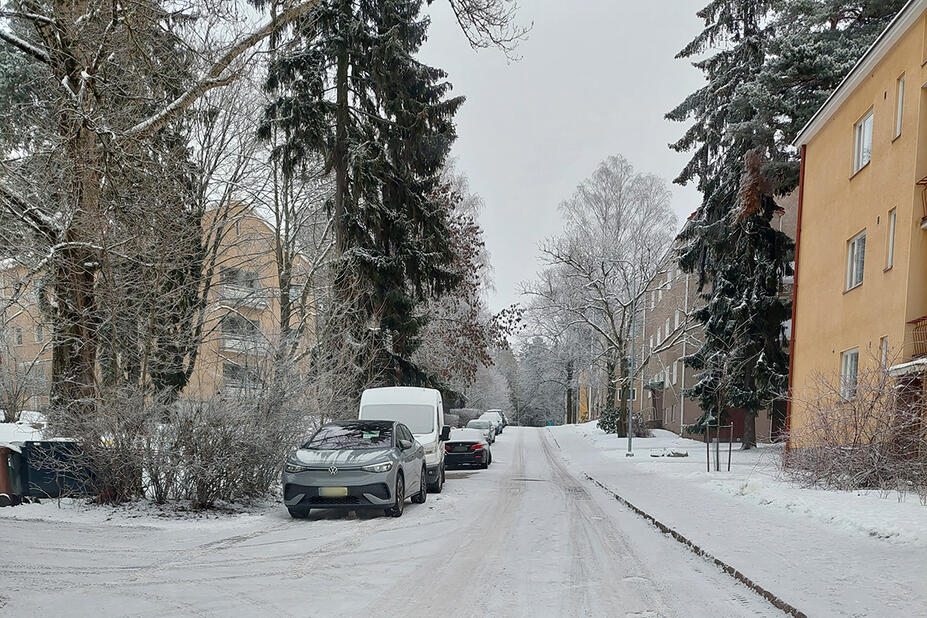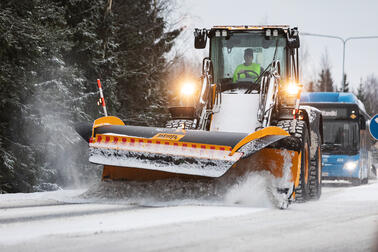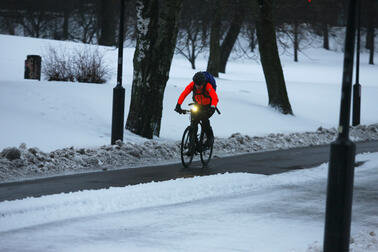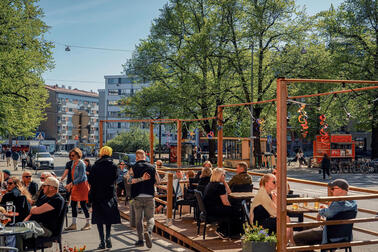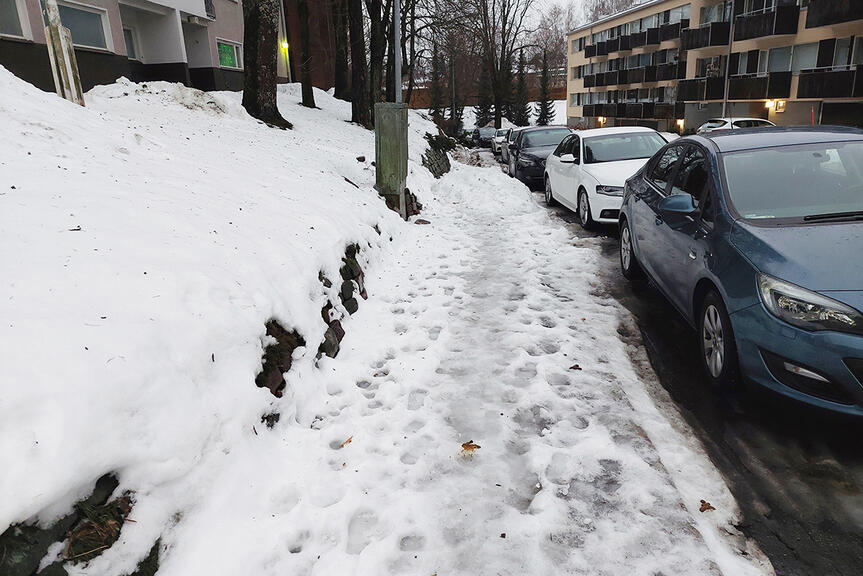
New parking arrangements include, for example, a ban on parking on the pavement side or moving parking from the pavement side to the other side of the street. The changes will affect the total number of spaces on the streets, as some parking spaces will be withdrawn and the spaces on some streets will be in restricted use.
The aim is to improve the safety and usability of pavements, especially in snowy weather. Better winter maintenance can reduce slips and falls, which are the most common causes of pedestrian injuries.
In the current situation, narrow pavements in particular can only be cleared of snow once parked vehicles have been moved out of the way of the ploughing equipment. This slows down snow removal considerably and causes extra work and costs.
The parking changes are based on a 2018 decision by the Urban Environment Committee (in Finnish).
Information event for residents on parking changes on 15 February
Changes to parking will be made across Helsinki outside the city centre, and will mainly come into force during 2023. Changes are on the way in the following areas: Haaga, Heikinlaakso, Herttoniemi, Jakomäki, Koskela, Kulosaari, Kumpula, Kuusisaari, Käpylä, Laajasalo, Lassila, Lauttasaari, Malmi, Munkkiniemi, Munkkivuori, Myllypuro, Pakila, Patola, Puistola, Pukinmäki, Reimarla, Siltamäki, Tapaninvainio, Tapulikaupunki, Toukola, Veräjämäki, Yliskylä and Vuosaari.
Parking changes will be made on streets where winter maintenance is difficult due to narrow pavements or confined street space. More detailed information and maps by area can be found on the city's website (in Finnish).
The city has studied parking occupancy rates and the impact of changes in areas where parking spaces are usually heavily used. This will ensure that residents continue to have enough parking spaces in their neighbourhood.
An online event will be organised for residents to ask questions and discuss the parking changes. The event will take place on 15 February 2023 from 17:00 on Teams. The presentations will be in Finnish, but you can also ask questions in Swedish and English. More information can be found on the event's website(Link leads to external service) (in Finnish).
Good experience of year-round arrangements gained from the Ruskeasuo parking trial
Winter parking arrangements in which parking is either moved or restricted to allow for snow removal, are now widely used in Helsinki. The year-round nature of the new parking arrangements will save winter maintenance resources by eliminating the time and money needed to replace traffic signs. The year-round changes will also make it easier to clear the streets of gravel in spring and leaves in autumn, and residents will not have to get used to changing parking rules.
The success of year-round parking arrangements has been tested on six streets in Ruskeasuo since 2016. The impact assessment of the trial has shown that the quality and cost of winter maintenance has improved. The change from temporary to permanent parking arrangements has clarified street use and parking controls, and reduced the number of cars wrongly parked on account of changing regulations.
